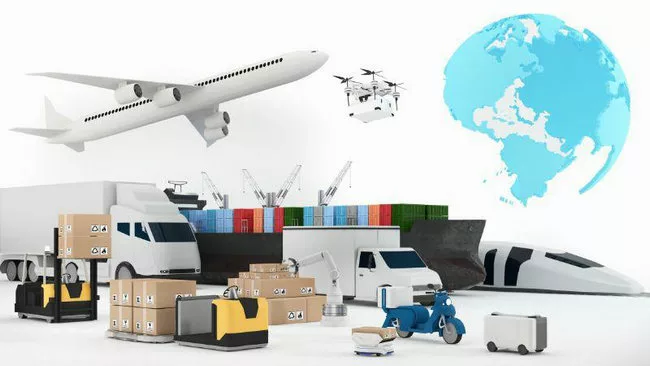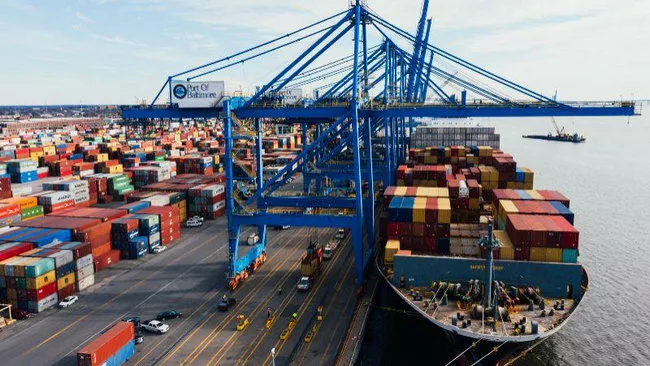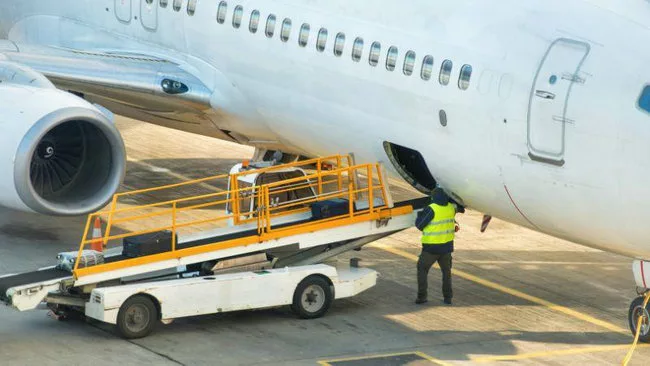
An Overview of China to Mexico Shipping
When it comes to international shipping, there are various options to consider, such as shipping options, cost, or maybe freight forwards.
Considering the way of shipping, sea freight is often more cost-effective, but transit times can range from 20 to 30 days, depending on the route and sailing schedule. Alternatively, air freight can be faster but typically comes at a higher cost.
Furthermore, to ensure a smooth shipping process, it’s essential to understand the customs regulations and duties. Mexico’s import duty rates range from 0 to 140.4%, with an average rate of 13.97%. Some goods are exempt from duty, and the fees are calculated based on the CIF value (cost, insurance, and freight).
If you want to save a lot of trouble, working with a reliable freight forwarder can help streamline the shipping process and provide better rates. These professionals have established relationships with shipping companies and can negotiate on your behalf for more favorable terms.
Freight Shipping Methods
When importing goods to Mexico, air freight from China is ideal if you’re looking for a fast and efficient way to transport your cargo. You can expect your cargo to arrive in Mexico within 3-5 days. Air shipping is a great choice if you have time-sensitive goods or smaller shipments.
Express shipping provides the quickest way to transport goods. Using this method, products can arrive at their destination within 3-5 business days, offering a speedy delivery option but very expensive.
If you’re looking to ship containers from China to Mexico or aren’t too concerned about the speed of delivery, sea shipping might be the better choice for you. Ocean freight is typically less expensive than air freight, which makes it an attractive option for large or heavy shipments.
When choosing sea shipping, you can opt for either Full Container Load (FCL) shipping or Less than Container Load (LCL) shipping. FCL is ideal for large shipments, as it allows you to utilize the entire container space for your cargo, while LCL is more suited for smaller shipments, as your cargo shares container space with other shipments.
Major Ports and Airports in China and Mexico
Ports in China
When shipping from China to Mexico, your cargo may pass through the Port of Shanghai, Qingdao, Shenzhen, Ningbo-Zhoushan, Hong Kong, Guangzhou, Tianjin, Dalian, Xiamen, and Yingkou. The Port of Shanghai and Qingdao are two of the busiest ports in China, playing a significant role in international trade.
Shanghai is the world’s largest port, with its strategic location near the estuary of the Yangtze River. It serves as a crucial connection point for Chinese suppliers to reach global markets. The port has modern facilities, making it efficient for handling various types of cargo.
Qingdao is another important port located on the Yellow Sea coast. Known for its advanced infrastructure and excellent transportation links, this port is a great choice for shipping your goods. Qingdao offers a vast range of services, ensuring smooth shipping processes.
The Port of Tianjin and Guangzhou are other major ports you can consider when shipping from China to Mexico.
Tianjin is located in northern China and is the largest coastal port in the region. It is a major transportation hub for several provinces, offering an essential gateway for Chinese suppliers to export their products. The facilities at the port are well-equipped to handle various types of cargo.
Guangzhou is situated in southern China along the Pearl River Delta. It is a prominent port in the region and plays an important role in the country’s maritime trade. Guangzhou is particularly useful for businesses looking to ship goods from nearby manufacturing centers such as Shenzhen and Ningbo.
In addition to these ports, Xiamen is another noteworthy port for shipping, with its strategic location on the southeastern coast of China.
Ports in Mexico
The Port of Veracruz is located in the city of Veracruz on the Gulf of Mexico. It is one of Mexico’s largest and busiest ports, handling a variety of cargo such as containers, vehicles, oil and steel. Veracruz has strong trade connections to the United States, Europe and Latin America.
The Port of Lazaro Cardenas is one of Mexico’s largest ports and a major western gateway located in Michoacán state. It specializes in handling containers, liquid and dry bulk cargo including grains, minerals, petroleum and steel products. Lazaro Cardenas has significant trade with Asia and the rest of the Americas.
The Port of Manzanillo is located in the northern part of the Baja California Peninsula. This port is known for providing excellent facilities and services for both cargo vessels and cruise ships. Shipping your goods from China to Ensenada Cruiseport Village can also be a convenient option due to its proximity to the United States, which allows for easy access to a large market. Additionally, they have a dedicated cargo terminal and experienced personnel ready to help you with any requirements you may have for your shipment.
The Port of Altamira is a major oil and petrochemical port in the state of Tamaulipas. It plays an important role in Mexico’s energy sector and is able to berth very large crude carriers and chemical tankers. Altamira has close trade ties to the United States and Canada due to its location on the Gulf Coast.
Another major port in Mexico is Ensenada Cruiseport Village, which is located in the northern part of the Baja California Peninsula. This port is known for providing excellent facilities and services for both cargo vessels and cruise ships. Shipping your goods from China to Ensenada Cruiseport Village can also be a convenient option due to its proximity to the United States, which allows for easy access to a large market. Additionally, they have a dedicated cargo.
Top International Air Ports in China and Mexico :
China
| Airport Name | City |
| Beijing Capital International Airport | Beijing |
| Chengdu Shuangliu International Airport | Chengdu |
| Shanghai Hongqiao International Airport | Shanghai |
| Shanghai Pudong International Airport | Shanghai |
| Xi’an Xianyang International Airport | Xi’an |
| Guangzhou Baiyun International Airport | Guangzhou |
| Hong Kong International Airport | Hong Kong |
| Kunming Changshui International Airport | Kunming |
| Shenzhen Baoan International Airport | Shenzhen |
| Hangzhou Xiaoshan International Airport | Hangzhou |
Mexico
| Airport Name | City |
| General Juan N. Álvarez International Airport | Tijuana |
| General Roberto Fierro Villalobos International Airport | Ciudad Juárez |
| Chichen Itza International Airport | Valladolid |
| Captain Rogelio Castillo National Airport | Cancún |
| Chetumal International Airport | Chetumal |
| Isla de Cedros Airport | Isla de Cedros |
The Shipping Cost of Freight From China to Mexico
Your costs might be influenced by factors such as:
- The size and weight of your goods
- The origin and destination ports
- The shipping method (FCL or LCL)
- Incoterms (DDP, FOB, etc.)
The Origin and Destination Ports

Chinese ports export goods to major ports in Mexico via container shipping routes. Transit times and rates vary based on the origin port and destination port. Generally, shipping 20 dry van containers by FCL from Chinese ports to Mexican ports takes between 17-42 days.
The Port of Shanghai has among the lowest rates, shipping to Altamira within 35 days for $3150 per 20 FCL. Other ports like Shenzhen charge $3850 for shipping to Veracruz over 40 days. Rates of $3850 are also typical for shipping between other Chinese and Mexican ports.
Higher rates of $4850 apply for shipping 20 FCLs from Tianjin to Lazaro Cardenas over 42 days. However, shorter routes like Dalian to Manzanillo take only 17 days for $1150 per 20 FCL.
Container size also impacts rates, with 20-foot containers averaging $1150-$2150 for shipping between China and Mexico, and 40-foot containers ranging from $3150-$3850 depending on the origin port.
Container shipping service from China to Mexico
| Port of Origin Port of Destination | Transit Time (days) | Rate for 20FT FCL | Rate for 40FT FCL |
| Shanghai Port Port of Altamira | 35 | $1150 | $3150 |
| Shenzhen Port Port of Veracruz | 40 | $2150 | $3850 |
| Ningbo-Zhoushan Port Port of Lazaro Cardenas | 38 | $2150 | $3850 |
| Hong Kong Port Port of Manzanillo | 39 | $2150 | $3850 |
| Guangzhou Port Port of Altamira | 40 | $2150 | $3850 |
| Qingdao Port Port of Veracruz | 42 | $2150 | $3850 |
| Tianjin Port Port of Lazaro Cardenas | 42 | $1150 | $3150 |
| Dalian Port Port of Manzanillo | 17 | $2150 | $3850 |
| Xiamen Port Port of Altamira | 20 | $2150 | $3850 |
| Yingkou Port Port of Veracruz | 20 | $2150 | $3850 |
The Season of Shipping
Shipping during peak season comes with higher costs and risks. Rates are increased significantly due to high demand as many importers are active importing goods. Not only will you pay more compared to low season, but space may also be limited on containers and aircraft. This raises the potential for cargo damage with limited room. To mitigate these issues, consider scheduling your shipment for the low season instead. When import volumes are lower, you can benefit from cheaper rates while also having ample space to safely accommodate your items. This allows you to minimize costs and protect the condition of your goods during transport. Planning shipments outside of the peak periods helps avoid the inflated prices and capacity constraints that typically occur when activity is at its highest.
Packaging and Palletization

Packaging Best Practices
When shipping from China to Mexico, it’s essential to package your goods securely to ensure they arrive in excellent condition. To do this, follow these packaging best practices:
Choose the right box size: Make sure the box is the appropriate size for the items you’re shipping, without leaving too much empty space. Fill any remaining space with suitable padding (e.g., bubble wrap, packing peanuts) to prevent your items from moving around during transportation.
Use high-quality materials: Durable, high-quality packaging materials like double-walled corrugated boxes can better protect your items during transit.
Protect fragile items: For breakable or delicate items, wrap them individually with bubble wrap or other cushioning materials. Additionally, clearly label the box as “fragile” to alert handlers.
Seal your packages securely: Use packaging tape to seal all seams and openings of the box to prevent it from accidentally opening during transit.
Understanding Palletization
Palletization is the process of stacking goods on a pallet (usually wooden) and securing them with a combination of stretch wrap and straps. This method is beneficial when shipping multiple items, as it keeps them organized and helps prevent damage during transportation. Here’s what you need to know about palletization:
Choose the right pallet: Select a pallet that is sturdy and undamaged, with a load-bearing capacity appropriate for your shipment’s total weight. Standard pallet sizes for international shipments are 48 inches x 40 inches (1,219mm x 1,016mm).
Stack your goods: Arrange your boxes on the pallet, starting with the heaviest and largest at the bottom. Ensure that the stack is stable and avoid overhanging items beyond the perimeter of the pallet.
Secure your goods: Wrap the entire stack with stretch wrap or a similar material to keep the boxes in place during transit. Additionally, use straps (metal or plastic) tightened around the stack to provide further stability.
By packaging your items carefully and using proper palletization techniques, you can expect your shipment from China to Mexico to arrive safe and sound.
What Documents are Required to Import in Mexico from China?
When importing goods from China to Mexico, it’s essential for you to prepare and submit the required documentation. This will ensure a smooth and hassle-free customs clearance process for your shipment. Here are the key documents you’ll need for importing goods from China to Mexico:
Commercial Invoice: Issued by the seller in China, it provides details of the goods including description, value, quantity. Used to determine import duties and taxes.
Packing List: Contains information about all items in the shipment such as dimensions, weight, number of packages. Ensures proper handling and transportation.
Bill of Lading: Transportation document issued by the carrier that serves as proof of receipt of goods and contract of carriage. Includes shipping details.
Certificate of Origin: Certifies the country of origin of the goods to determine eligibility for preferential tariffs or comply with import regulations.
Weight or Volume Certificate: Verifies the weight or volume of the shipment which is used to calculate freight charges and ensure compliance with restrictions.
Import Tax Identification Number: Required to process import documentation in Mexico.
Registration as an Importer: Businesses must register as an importer with Mexico’s tax authority.
Customs Value Declaration: Provides customs value of the imported goods for tax assessment.
Proof of Payment of Taxes: Importers must be tax-compliant to clear customs.
Understanding Trade Laws
When importing from China to Mexico, it’s essential to understand the applicable trade laws, tax liabilities, and relevant Incoterms. Here are some key points to consider:
- Duty rate: The duty rate on imports to Mexico varies from 0% to 140.4%, with an average rate of 13.97%. Certain goods are exempt from duty.
- Value-added tax (IVA): An average rate of 16% is calculated based on the total of CIF duties, duties, and other taxes.
- The threshold for imports: Mexican importers can import through courier and parcel companies without needing a Mexican Customs License / Importer of record (Padron de Importadores) for imports with a value up to USD 2,500 at Mexican Customs Ports. Before May 9, 2022, the threshold exemption was USD 1,000.
- Incoterms: Be familiar with the Incoterms, which define the responsibilities and risks of buyers and sellers involved in international transactions. These guidelines help ensure a clear understanding of the roles and liabilities, especially regarding freight quotes and tax liabilities.
Prohibited and Restricted Items for Import into Mexico
Currently, Mexico has adopted measures to prohibit the import of 17 products with different tariff codes, as well as products from the relevant countries of origin, on grounds of public safety, health and public interest, among others:
- marijuana and preparations of marijuana
- inhalants
- diacetylmorphine
- glutamic acid (monosodium glutamate) type products, etc.
In addition, the import or export of many products specified in United Nations Security Council resolutions is prohibited. Until 2001, for the purposes of national security, public health and the protection of domestic industry, Mexico imposed import restrictions on the following products:
- weapons
- petrochemicals
- engines
- certain important machinery
- automobiles
- used tires
- used machinery
- used clothing
- used office supplies
Why Choose Us? Luckystar Logistic
Selecting the right freight forwarder is crucial for a smooth shipping experience from China to Mexico. You should consider factors such as experience, reliability, and the range of logistics solutions offered.
Here, We have:
- The Quickest Mode of Delivery
- Reliable Delivery Timings
- Wide Delivery Coverage
- Efficient Tracking System
Established in 2022, Luckystar is an esteemed member of the Federal Maritime Commission (FMC) and operates as a Non-Vessel Operating Common Carrier (NVOCC). The company’s mission is to deliver superior service quality at reduced costs, primarily serving China, the USA, Canada, and Europe. With core team members boasting over 20 years of experience in logistics, Luckystar brings considerable expertise to the table. Since its inception, the company has been dedicated to offering global door-to-door transport and logistics solutions, emphasizing dependability, adaptability, and responsiveness.
We’re not just any company; we are experts in transportation! Offering industry-leading solutions, we take pride in providing premium shipping services at a fraction of the cost of other freight forwarders, both in China and across the globe. Here’s why partnering with us is the smart move:
Accuracy You Can Count On:
Say goodbye to delivery delays and hello to timely delivery, which is vital for businesses needing to deliver goods swiftly to their customers.
Your Passport to Global Reach:
Our wide network of delivery destinations virtually covers the entire globe, offering extraordinary opportunities for businesses aiming to expand their reach. You can be assured that your package will find its way to almost any corner of the world, taking your business global!
Track with Ease:
Say goodbye to guesswork. Our stringent procedures afford you a live tracking mechanism, making it easy for you to follow your shipment’s progress at every stage of its journey. Stay informed and enjoy peace of mind, knowing exactly where your shipment is anytime you need to know.
Personalized Service, Every Step of the Way:
One of our dedicated team members will personally oversee your shipment from start to finish. This, coupled with our commitment to transparency and constant communication, ensures you are kept updated on the progress of your cargo every step of the way. Our sea and air freight service from China to Mexico offers secure and dependable options for transporting all types of goods, especially those that are time-critical or of high monetary value.
Looking for an experienced freight forwarder to assist you in shipping from China to Mexico? Reach out to us. We’re always ready to help. Offering the unbeatable cheapest shipping rates for international shipping, our services are more affordable than you’d believe. Don’t hesitate! Get in touch with us today.
Frequently Asked Questions
How long is shipping from China to Mexico?
Shipping from China to Mexico can take anywhere from 18 to 30 days, depending on the shipping method you choose. This duration is specific to sea freight transportation from port to port. If you opt for air freight, the shipping time will be significantly shorter.
What are the costs of shipping from China to Mexico?
The cost of shipping varies depending on factors like the shipping method, cargo type, and distance. Generally, sea freight is more affordable than air freight, but it takes longer. To get the best shipping rates, it’s advisable to work with a reputable China Freight Forwarder like SINO Shipping.
Are there customs duties when shipping from China to Mexico?
Yes, there are customs duties when shipping items from China to Mexico. The duty rate on imports to Mexico ranges between zero to 140.4 percent and averages 13.97 percent. However, certain goods are exempt from duty. Make sure to check the applicable customs regulations for your specific cargo.
How to calculate import taxes for Mexico?
Import taxes in Mexico are calculated based on the total CIF value (Cost, Insurance, and Freight) as well as customs duties and other applicable taxes. The average import tax rate is 16%. It’s essential to familiarize yourself with the specific import regulations for the products you’re shipping to avoid any unexpected costs or delays.
What is the fastest shipping method from China to Mexico?
The fastest shipping method from China to Mexico is air freight. While it’s generally more expensive than sea freight, it offers significantly shorter transit times. If you require your cargo to arrive quickly, air freight is the preferred choice.
Are there any specific regulations when shipping items from China to Mexico?
When shipping items from China to Mexico, it’s important to be aware of specific import regulations and restrictions. Some products may require special permits or certifications, while others may be subject to quotas or outright bans. Prior to shipping, ensure you comply with all relevant regulations to avoid any delays, fines, or penalties.
